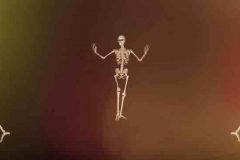
What’s the time?
So just what IS the time?
One of the early challenges to my research was understanding basic human concepts and how they are altered in the digital age. A key concept is time because time affects other concepts like memory or sense of self . [1]
I was watching a group of children playing the game “What’s the time, Mr Wolf?” In the game a group of children follow a selected child, the ‘wolf’, chanting “What’s the time, Mr Wolf?” The wolf would freeze and mostly respond with real world times like “one o’clock” or “three o’ clock” but would then randomly answer “Dinner time“, and start chasing the other. This would set of a burst of great excitement, activity and chaos among all the participants as they tried to avoid capture. You may have played this game as a child.
It occurred to me that like the children, we happily follow the known and understood concept of linear clock or biological time but we are thrown into disarray when confronted with a different concept of time. In the case of the wolf the new time is dependent on his gastronomic requirements and the need to catch a victim. In the world today humans are confronted with technology time, which is linked to ever changing and evolving technologies. These constant changes result in accelerating cycles of innovation to avoid collapse as illustrated in Geoffrey Wests uTube clip ‘The growth paradigm: Innovate or collapse’. [at point 145.]
As with the wolf scenario, humans have no way of predicting technology time. It changes to often and in unexpected ways. What people can do to help themselves is learn to read the signs, as with the children in the game, and prepare themself for action and adaptation.
To extend this story into your real world life, next time you catch yourself wondering “how much time do I have to do this?” answer with “Not enough!”







